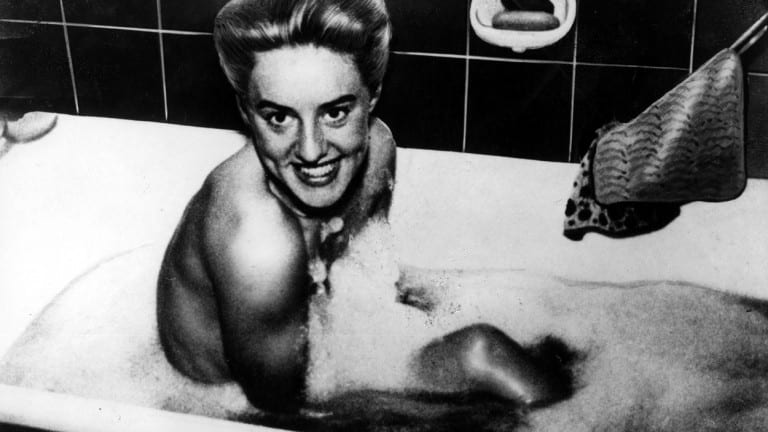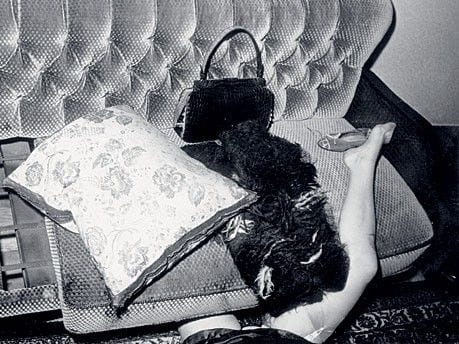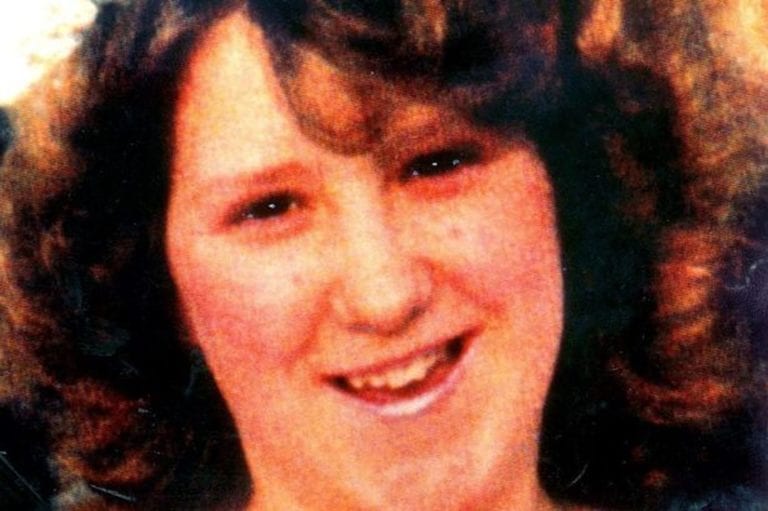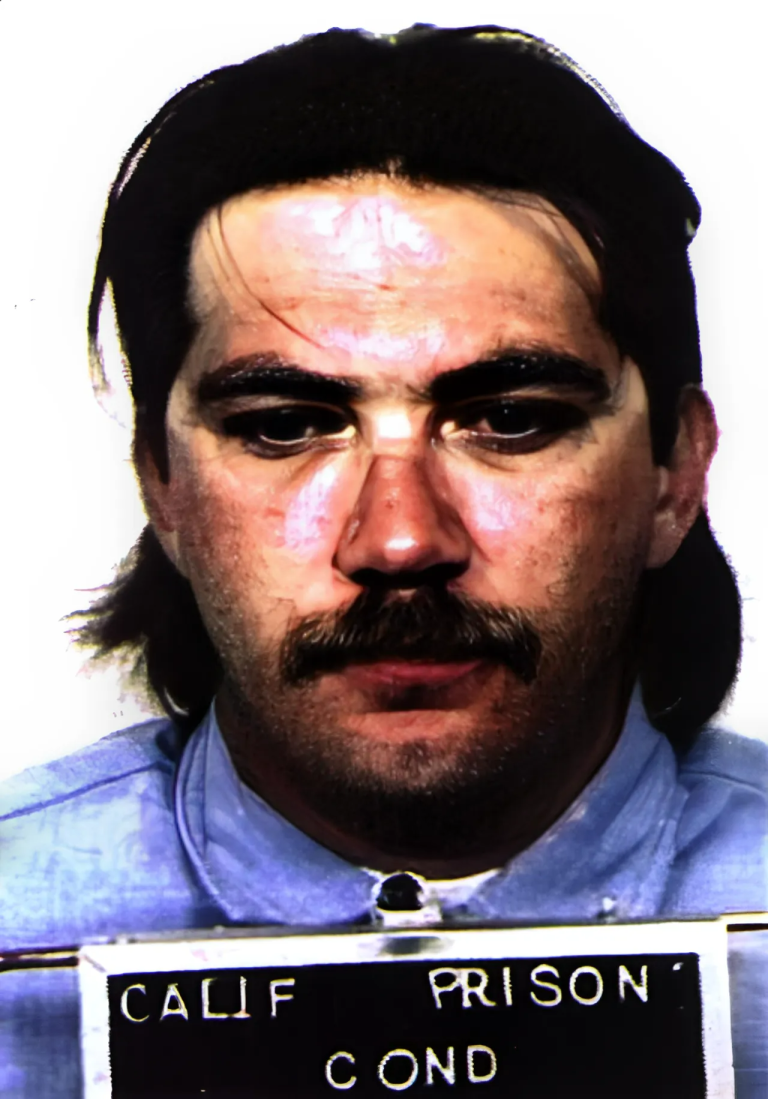Rosemarie Nitribitt was a 24-year-old high-end escort working in postwar Germany. The illegitimate daughter of a charwoman, Rosemarie grew up in poor conditions. In 1938, Rosemarie and her younger half-sister, Irmgard, were admitted to a children’s home in Eschweiler. The following year, Rosemarie was fostered by Nicholas and Anna Maria Elsen. However, as war was fast approaching, the Elsen family fell into tough times and when Rosemarie was 11-years-old, she was raped by a neighbourhood boy. The rape was swiftly covered up in the small Eifel village. Rosemarie – who was once described as bright and lively – soon became reclusive and isolated.
As Rosemarie blossomed into a teenager, she began selling sex, focusing primarily on Allied troops in the Army of Occupation. After being arrested for solicitation, Rosemarie was in and out of juvenile correctional homes and escaped several times. In 1951, Rosemarie was sentenced to three weeks imprisonment for “vagrancy” at a juvenile detention center in Frankfurt. Following her release, she resettled in Frankfurt and continued to work as a sex worker. In an attempt to attract the more prosperous clientele, Rosemarie learnt English and French. To avoid carrying a prostitution card, she voluntarily went to police health check-ups each month.

Rosemarie soon reaped the benefits of these wealthy customers and started driving an Opel Kapitan and was gifted with lavish holidays to the Mediterranean. Rosemarie promptly became very wealthy. She purchased herself a black Mercedes-Benz 190SL with red leather upholstery which she would use to pick up her clients and drive them back to her upscale apartment in Stifstrasse 36. Her routine was to drive down the Kaiserstraße and past the Frankfurter Hof, one of Germany’s most expensive hotels. As Rosemarie spotted a well-dressed gentleman, she would stop her car, roll down the window, and play loud music in an attempt to get his attention. Later, as she became more in demand, she would arrange meetings over the phone but only with men who knew the password “Rebecca.”
On the 1st of November, 1957, Rosemarie was discovered dead in her luxurious apartment; her whimpering white miniature poodle, Joe, lay beside her lifeless body. Police were alerted to the scene when Rosemarie’s cleaner couldn’t gain entry to her apartment for several days and noticed the accumulation of delivered bread at her door. Rosemarie had been strangled to death with a nylon stocking that remained tied tightly around her neck; she also had a laceration on her head. It was believed that she had been dead for at least several days and approximately 18,000 marks ($34,000 today) had been stolen from her apartment. Despite this, it didn’t appear as though the apartment had been ransacked. All of her expensive belongings – including closets stuffed with expensive fur coats – were left untouched.1 Rosemarie would be buried in North Cemetery in Dusseldorf. Her burial was a sombre and hasty one with very few guests other than police officers and reporters. Her mother, Frau Maria Hoffman, and her sister, Irmgard Geyermann, made an appearance. Neither cried.

The ensuing police investigation into the slaying was haphazard and sloppy. In fact, within the first few days of the investigation, much evidence at the scene was destroyed and ultimately, the police files went missing. The investigation into Rosemarie’s acquaintances revealed several prominent figures. In fact, there was a photograph of a man so famous that even today, he hasn’t been identified. Many of these infamous men were discreetly questioned by investigators. Two U.S. Army officers and one enlisted man were three of those questioned. As a result, members of the U.S. Army were promptly reminded that if they were caught having relations with German sex workers, they could be court-martialed and subsequently sent back home. According to these men, Rosemarie had asked for them all for $250 for an abortion.
The media soon started to theorise as to what motive her killer may have had; they speculated it was greed, jealousy, fear or lust. Investigators were quick to discount the latter, claiming the fact that she hadn’t been raped as evidence that the killer had not been sexually motivated. As there is a stigma attached to sex workers, people soon started to tarnish Rosemarie’s name and reputation. Rumours soon started to circulate that Rosemarie kept a tape recorder which she used to record the secrets she obtained from prying businesses and customers to then use as blackmail. However, when investigators searched Rosemarie’s apartment, they found no tape recorder or any evidence that she had recorded any conversations, Moreover, none of the 40 – 60 clients questioned mentioned blackmail or a tape recorder. One investigator on the case said that Rosemarie didn’t have the intelligence to blackmail clients of “high mental caliber.”2

One suspect early on in the investigation was a young student who taught Rosemarie French. He was never publicly named. This young student and Rosemarie had been close for years, even before she became wealthy and well-known. “He killed her because he loved her and was jealous,” said investigators at the time.3 However, the young man provided a solidi alibi and was cleared of any involvement.
The prime suspect subsequently became Heinz Pohlmann, a 37-year-old businessman and personal friend of Rosemarie. Pohlmann came under a cloud of suspicion after he started bragging around city that he was the only person in Frankfurt to have a key to Rosemarie’s apartment. When Rosemarie’s body was discovered, it was noted that the apartment door was locked leading to speculation that the killer must have had a keyy. Upon his arrest, a witness came forward to claim to investigators that Pohlmann had almost ran him over late in the afternoon of the 29th of October – around the date Rosemarie was murdered. He said that Pohlmann sped past the courtyard behind Stifstrasse 36, the apartment block that Rosemarie lived, almost knocking him over. The investigation into Pohlmann revealed that he had been having financial difficulties but following Rosemarie’s murder, he settled his debts and even purchased a new car. Pohlmann vehemently denied that he had any involvement in Rosemarie’s slaying and contended that their relationship had been strictly platonic, adding that he was gay. He even suggested that Rosemarie had been murdered by a woman.
During his interrogation, Pohlmann made conflicting statements and claimed that the money he recently received was from thefts and embezzlement, however, not from Rosemarie. He claimed that since he had a key to Rosemarie’s apartment, if he wanted to rob her then he very easily could have when she wasn’t home. When it soon dawned on Pohlmann that he was the main suspect, he threatened to release the names of Rosemarie’s well-known clients. Pohlmann also owned a pair of grey trousers that appeared to be stained with something. “Rust,” he explained. However, a serologist in the federal criminal office contended that the stain was in fact human blood. “Well maybe it is blood. I suffer from a skin disease which makes me bleed from time to time,” Pohlmann responded.
Pohlmann was eventually charged with the murder but in July of 1960, he was acquitted. It was found that the prosecution had failed to produce sufficient evidence against him. The fact that the prosecution could not link the blood on Pohlmann’s trousers to Rosemarie was damning to the case against him. Other than circumstantial evidence, there was nothing that could conclusively tie him to the murder and he was once again a free man.
Following his acquittal, Pohlmann landed a leading role in a film about Rosemarie but due to the negative backlash, the producer dropped him. This wasn’t his only attempt at capitalising on his association with the tragic murder victim. He contacted Soviet authorities in East Germany and offered to sell a list of Rosemarie’s clients, claiming that he knew them all by memory. The Soviet authorities, however, refused to buy the so-called list.4 He also wrote lurid articles in which he would describe his nights with Frankfurt’s most expensive escort and magazines started to publish his articles. Shortly after publication, his articles were dropped due to sweeping protest from readers.

Over the forthcoming years, the case of Rosemarie Nitribitt captured the minds of investigators and civilians alike. Her life and death was so sensational that she became somewhat of a national heroine. Her glamorous face was featured in numerous magazines and newspapers. People even named boats, horses and babies after her. While there have been several movies based on her life and murder, they’re extremely inaccurate and hyperbolic. Despite the popularity of the case, nobody has yet been found guilty of her murder. Many have long speculated that high-ranking persons – presumably involved with Rosemarie – have thwarted the investigation in an attempt to protect their reputation.







Comments:
This is a really interesting article. I wonder if some high ranking member of society became concerned that they would be spotted with her or caught with her and decided to kill her? I’m so curious as to who the photograph was of…. I have a few ideas running though my head. It doesn’t shock me the police work on this case was crap. I wonder if it would be different if she was not a prostitute?
What were Prince Philips movements at that time? lol
poor young girl,
Sounds like to me her best bud got away with murder. Regarding the stains, I wonder if it is too late to match DNA from all those many years ago?
Polhmann! Too many coincidences! Poor thing! She should have gotten her cash and moved to US or something!
Not called for.
You took the time to read the article and all you could comment was a shitty line. Nasty bitches wouldn’t be a loss for the world.
Money talks, or shall I say money doesn’t talk! It’s so sad that because of money she was murdered and because of the money and high clientele it was covered up!
According to the official German investigation, the little poodle Joey was locked up in the bathroom. So he didn’t lay down next to the body when Rosemarie Nitribitt was found. Next to that, there was a tape recorder which was switched on when the investigators entered the house. To be precise, a Grundig TK5. What was on the tape is not very clear, as the voices are hardly audible. It could be interpreted as „lass mich los!“ which means let me go, but also something like “Joey come here” could be heard.
Bas Dekjrrs must be Bas Dekkers!